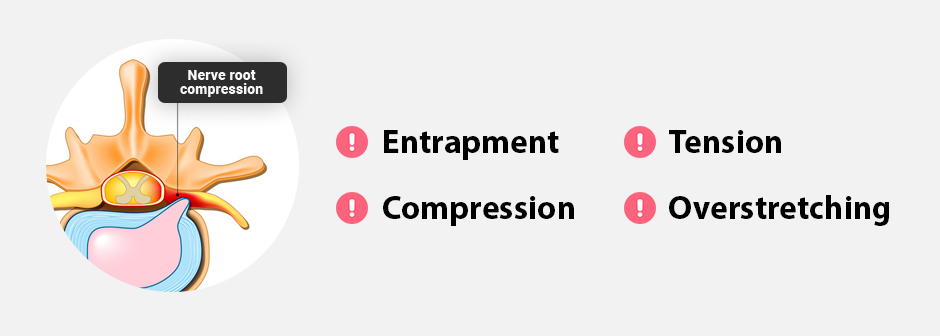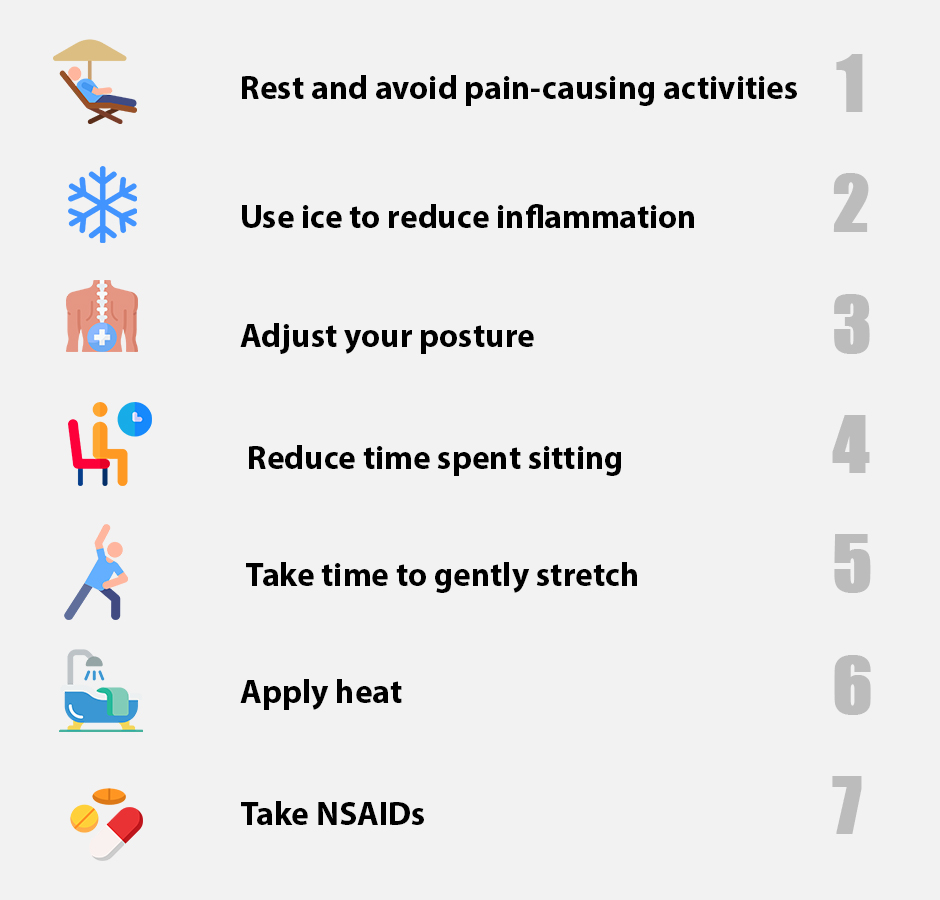
The human body is designed to move, but modern lifestyles keep us in sedentary mode for hours on end, day after day. Sitting for long hours takes a toll on your body in myriad ways. Not only does it impact your cardiorespiratory health, but it also rearranges your body alignment by creating muscle imbalances that put extra stress on your joints and connective tissues. When your body’s architecture becomes misaligned, your nerves can become compressed or entrapped, restricting their ability to glide freely.
Learn about what causes pinched nerves, seven self-help strategies for relieving pinched-nerve pain, and some therapeutic solutions for eliminating pinched nerves and restoring pain-free gliding.
“Pinched nerve” is actually a non-clinical umbrella term that does not really explain the underlying cause of nerve afflictions. Your peripheral nerves travel throughout your body in specialized fascial tunnels created by spaces between muscles. On their path along these tunnels, they sometimes encounter osteofibrous tunnels, aponeurotic bridges and blood vessels. Nerves also sometimes dive inside muscles without the protection of fascia.
There are multiple causes of mechanical nerve dysfunction:

Every nerve has its own unique anatomical pathway, and nerve compressions are unique to the individual patient’s anatomy and their movement patterns.
Factors that contribute to the risk of pinched nerves include:
It is important to note that failure to treat a pinched nerve can cause serious nerve damage over time that could become irreversible. If pinched nerve pain persists after gentle self-treatment, you should seek the help of a therapist trained in diagnostic ultrasonography. Ultrasound imaging lets you visualize the nerves in motion, in real time. It can reveal entrapments and pressure points that can be resolved with physical therapy.

If you think your pain is caused by a pinched nerve, there are some things you can do right away to relieve pressure and reduce pain.
Self-treatment can temporarily relieve pinched nerve pain, but it does not get at the underlying cause. To eliminate pain at its source, you should seek professional help. A chiropractor or physical therapist specializing in neuropathy treatment can help you identify the source of your pinched nerve pain and provide treatment to eliminate it for good.
At NYDNRehab, we have an extensive toolbox of cutting-edge therapies for resolving pinched nerve pain.
Our effective therapies for treating pinched nerves include:

It is important to look for a clinician who offers alternative pinched nerve treatment methods that do not involve drugs or surgery. Drugs only mask the symptoms without providing a long-term solution. Surgery is always risky, with no guarantee that it will resolve your problem.
Dr. Lev Kalika is a world-recognized expert in musculoskeletal medicine. with 20+ years of clinical experience in diagnostic musculoskeletal ultrasonography, rehabilitative sports medicine and conservative orthopedics. In addition to operating his clinical practice in Manhattan, he regularly publishes peer-reviewed research on ultrasound-guided therapies and procedures. He serves as a peer reviewer for Springer Nature.
Dr. Kalika is an esteemed member of multiple professional organizations, including: